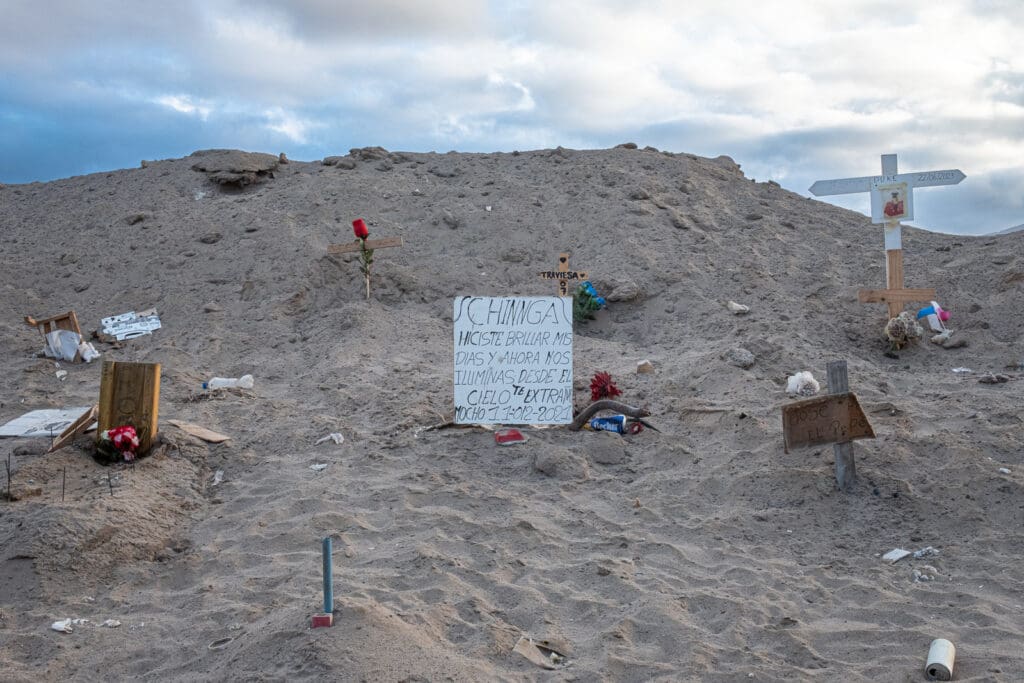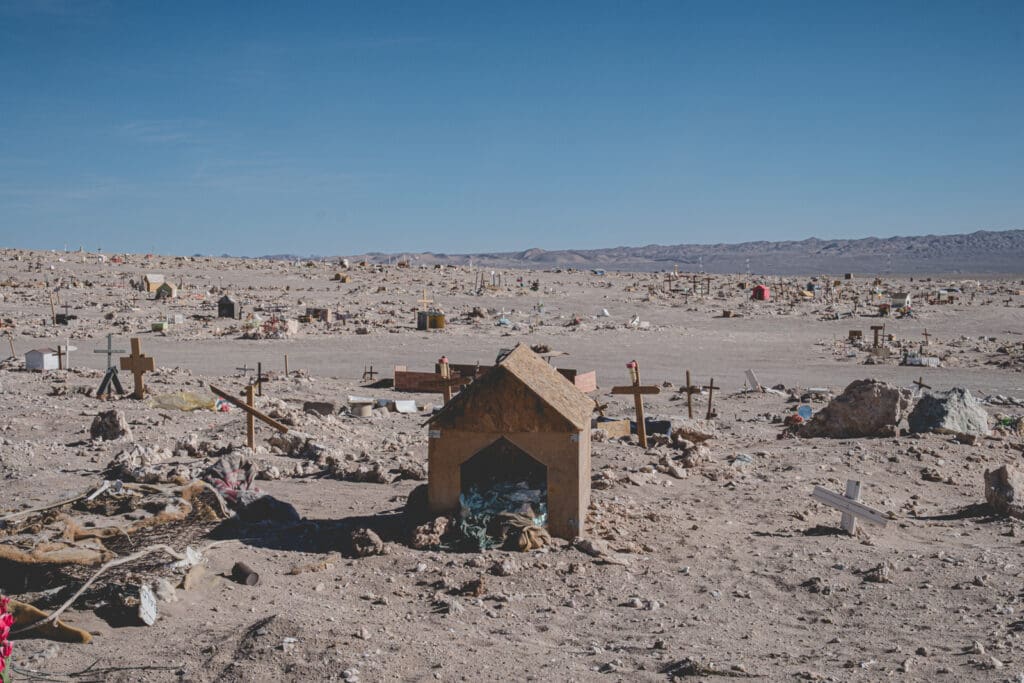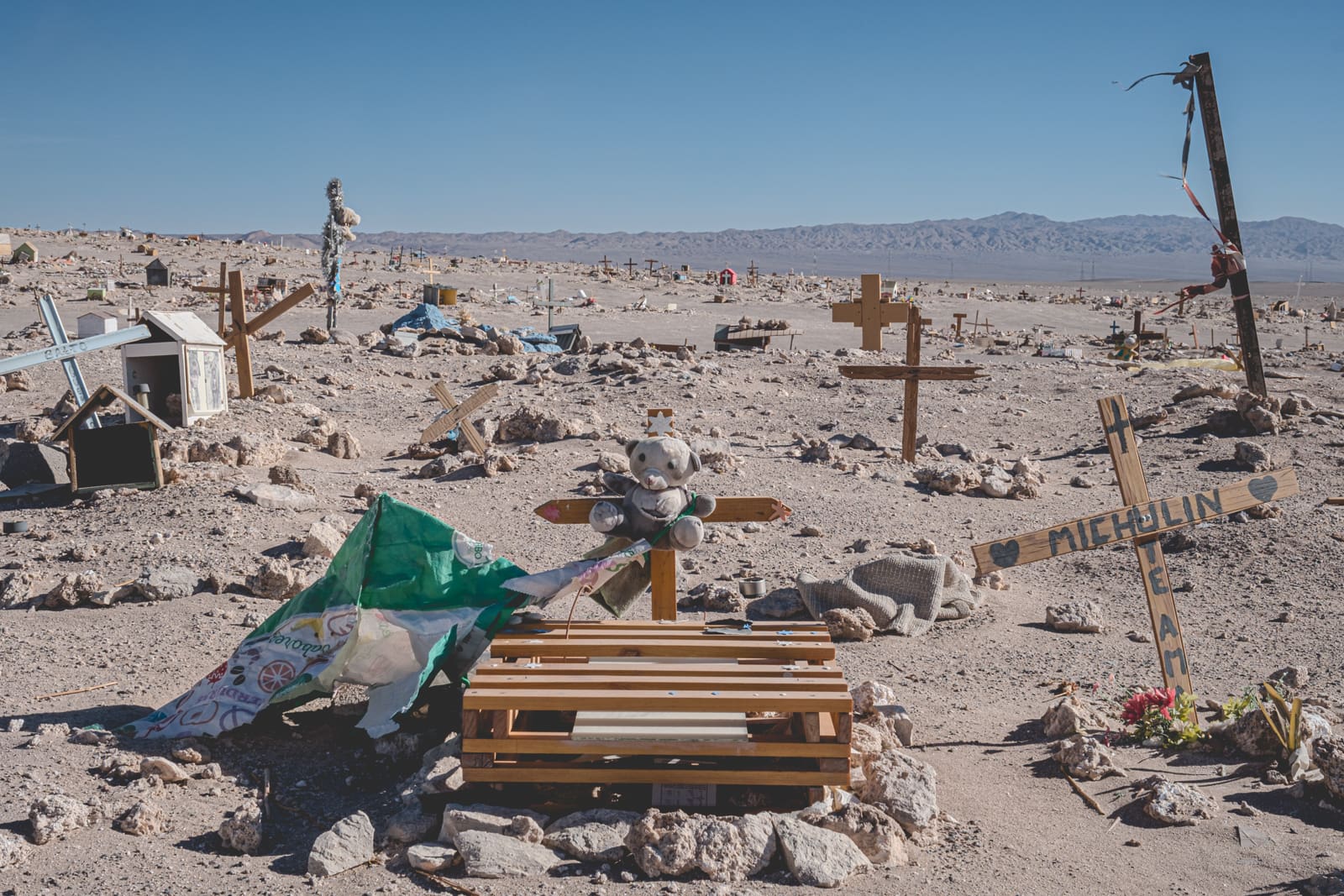You arrive tired in the evening. With clothes full of dust. And in my mouth the dry taste of the earth.
After driving just under 1,300 kilometres in the Chilean desert between the Andean cordillera, full of ravines always too distant to touch and framing a blue sky capable of crushing all dimensions and perspectives, what comes back to me is the large number of dogs along the roadside.
They sleep, they run, they look at you puzzled.
And someone, perhaps because he cannot dodge the rare cars or trucks that eat dust on the long strip of asphalt, or maybe because he is too tired to continue his walk along the edge of the desert–you realize that he, now, is free. Slight. In the wind.
However, in the following minutes, the image of that part of the stained asphalt remains etched in your mind.
And when you stop in some sparse desert which looks like something out of the script of some 1970s movie, a name rich in history and stories, built on the route of the great mines and then forgotten-except by its inhabitants-where silence decorates the streets and the only square, you realize that the dogs are stray only in the cool of the morning and the evening breeze. In the heat of the day, they find shelter in the homes and gardens of their…companions.
Around here, in this remote and dusty Chilean desert that bears the name of Atacama, shaped first by post-Columbian history and then by the exploitation of rich copper mines and lithium deposits, it is customary for the dog to have multiple “masters” … for various people to take care of that dusty, pawing quadruped with its dark, perplexed gaze … but it is only so long as you don’t get close. The dark, puzzled look turns into a belly in the air to caress and a mouth with which to “share” your meal. And when you ask the attendant on duty how old he is, the answer is always the same: he is young or old.
And so, on your way through the Atacama Desert, the dogs you encounter are either young or old. And you can call them: Rubio, Calle, Cabo, Blanco, Negro, Nano, Pavo, Panchito…one of them will be correct. And they will still choose not to look at you. Or to become, for an instant, your one-portion friend: for once in that instant.
And you will remember them in the days to follow. Simply because, on that day, when you arrive in the evening tired and with the desert on you, you will have met more dogs than people.
And people, we know, sometimes dislike us.




A long moment in time
Time is one of the few things you cannot stop. Photography, even the noblest, is not capable of doing so either. He fixes a moment in a frame, but time – real-time – continues to flow. And, by the most straightforward law of nature that everything has a beginning and an end, even for those wagging, dusty souls who populate the roadsides of the Atacama Desert, from Bolivia to Chile, there comes that instant where everything is transformed.
Bod Dylan wrote, “Time is an ocean, but it ends at the shore”. And that’s the impression I got as I walked down the long snake in the desert. When I reached the edge of a small town on the Pacific coast, facing the great ocean, a long expanse of small crosses, of small kennels in the most varied form. Some were adorned with a small stuffed animal as a reminder and testimony to a time gone by.
Whether life was spent at the edge of a desert road or in the backyard, the second half of life no longer deserves a front-row seat. Even when faced with the vast ocean of raging waves.
And going through that long expanse of small, messy crosses, hundreds and hundreds of meters long, after an initial moment of bewilderment … if you stop and look in the silence of the desert that rumbles in your ears, you can hear them barking, playing, running, fighting.
It may be a desert mirage … but here we are, not in Africa, where the sand is the colour of gold, and everything changes with the first breath of wind. Here we are in South America. And the Atacama Desert, witness to wars and conquests, has one great certainty: life and death bark alike.



